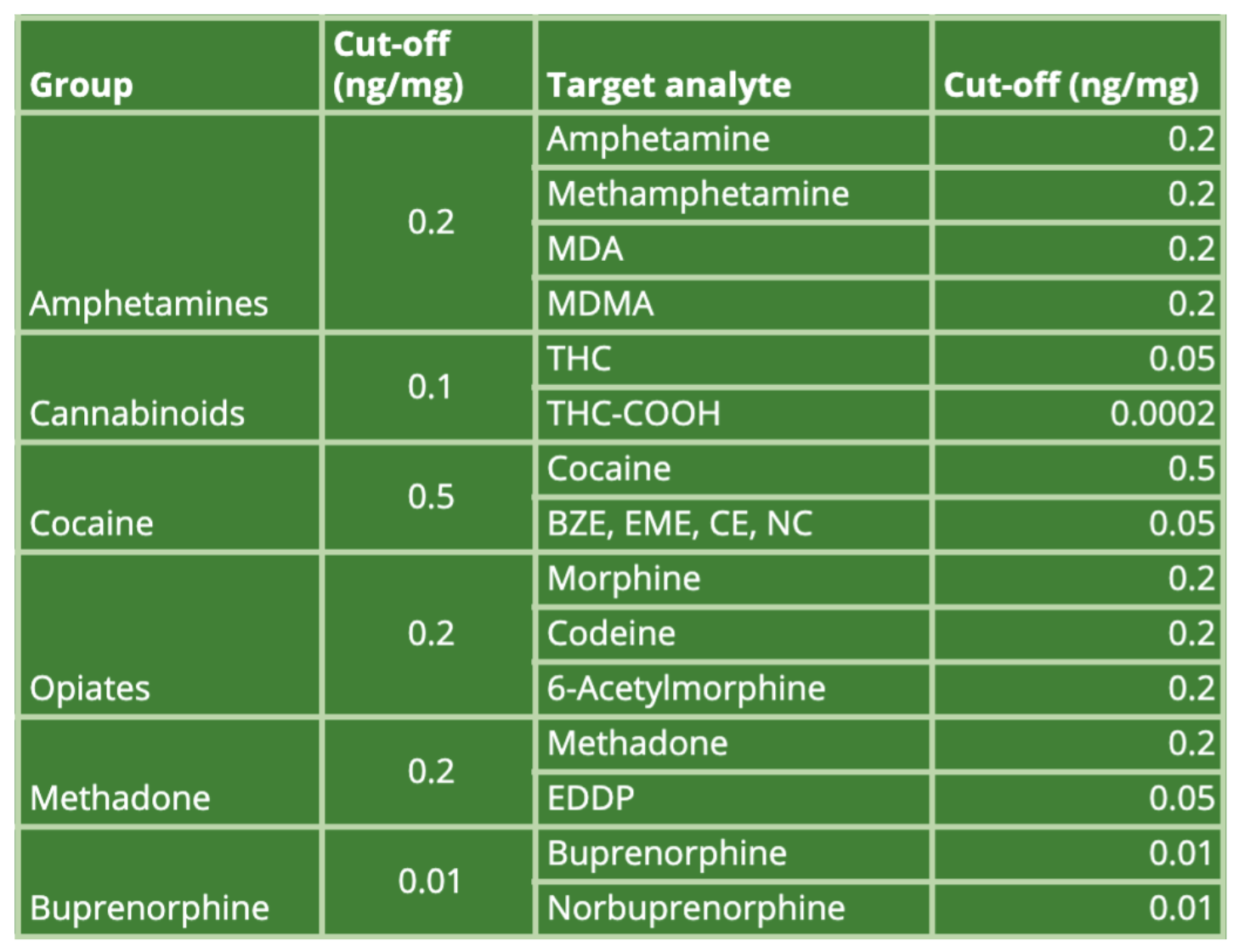What is a cut-off level?
Cut off levels are useful tools for the understanding of drug results. This is because the cut off levels can minimise the chances of false positive results. False positive results can occur from external contamination due to environmental exposure, such as exposure to smoked Cannabis or Cocaine dust etc or the involuntary use of a drug, for example if a drug was consumed at low level by mistake.
What is a drug cut off level?
The cut off concentration is a pre-set value that is used to compare the detected drug level of an individual sample to help to determine whether this individual has used a drug or not. It is advised by the Society of Hair Testing (SoHT) that "the guidelines and the available literature on drug concentrations in hair from drug users and patients recommend cut-offs to enable identification of a repeated drug user".
It is also a useful tool to determine whether a person has previously or is currently consuming a drug. The detection of drugs above the cut off level suggests the current repeated use of a drug, which is one of the main purposes of drug testing.
Why does DNA Legal report below this?
Drug results can provide much more detail for drug history than purely consumption or no consumption. Not reporting all concentrations of a drug can provide false negative concentrations and remove relevant information for your case. The below are some examples of the importance of reporting below the cut off level The SoHT recommends that these cut off values are not to be used in children cases as a standard level and/or in criminal forensic cases.
How to interpret cut off levels in different circumstances
1) Consumption:
Not all consumption will produce levels above the cut-off. Single drug intake or if a drug is consumed at low levels or infrequently, it is likely that the detected drug won't provide a concentration over the cut off level. Not reporting these results could provide a false negative interpretation.
If someone has been exposed to a drug unknowingly, such as being spiked, then it may show a “negative” result (below the cut off level), suggesting the person was never exposed to any drugs.
2) Hair treatments:
Studies show that hair cosmetic products and chemical treatments, such as hair dye and bleach, will likely cause the level of drugs and analytes in the hair to decrease between 30 and 80% to the level of being not detected. Therefore, if someone has consumed a drug frequently, but had dyed their hair, then the level of drug concentration in the hair may reduce to concentrations below the cut off level.. Not reporting these results could provide a false negative interpretation.
3) Exposure:
If someone has been exposed to a drug, whether knowingly or unknowingly, then this will likely produce levels under the cut off level. Exposure does not only include the consumption of a small amount of the drug but also in some cases different ways of passive exposure. Passive exposure can be from being in an environment where the drug has been used that includes passive exposure and contamination of the drug itself or being exposed to a contaminated surface or object.
4) Children:
There are no current recommended guidelines for the cut off level for drugs in a child sample. Because of this, when a child is being tested, it is very important that any detected concentrations are reported to indicate any type of exposure, such as the undeliberate consumption of a drug, the exposure to an environment contaminated with the drug, the consumption of the contaminated milk from the mother etc. Not reporting these results could provide a false negative interpretation for the exposure to a drug and the child could be placed back into the care of a drug user/household containing drugs.
The use of the cut off value is a useful tool to differentiate between the current user of a drug and previous users or to determine the exposure to a drug. By reporting any concentration under the cut off level as “negative” could provide a false negative result and therefore potentially putting people at risk, especially children and/or babies. Below is a table to help show the cut off levels recommended by the Society of Hair Testing:
Table 1: The cut-offs for drugs and metabolites in hair (SoHT, 2020).

For more information on cut-off levels and how we can help with your case - get in touch with DNA Legal here

